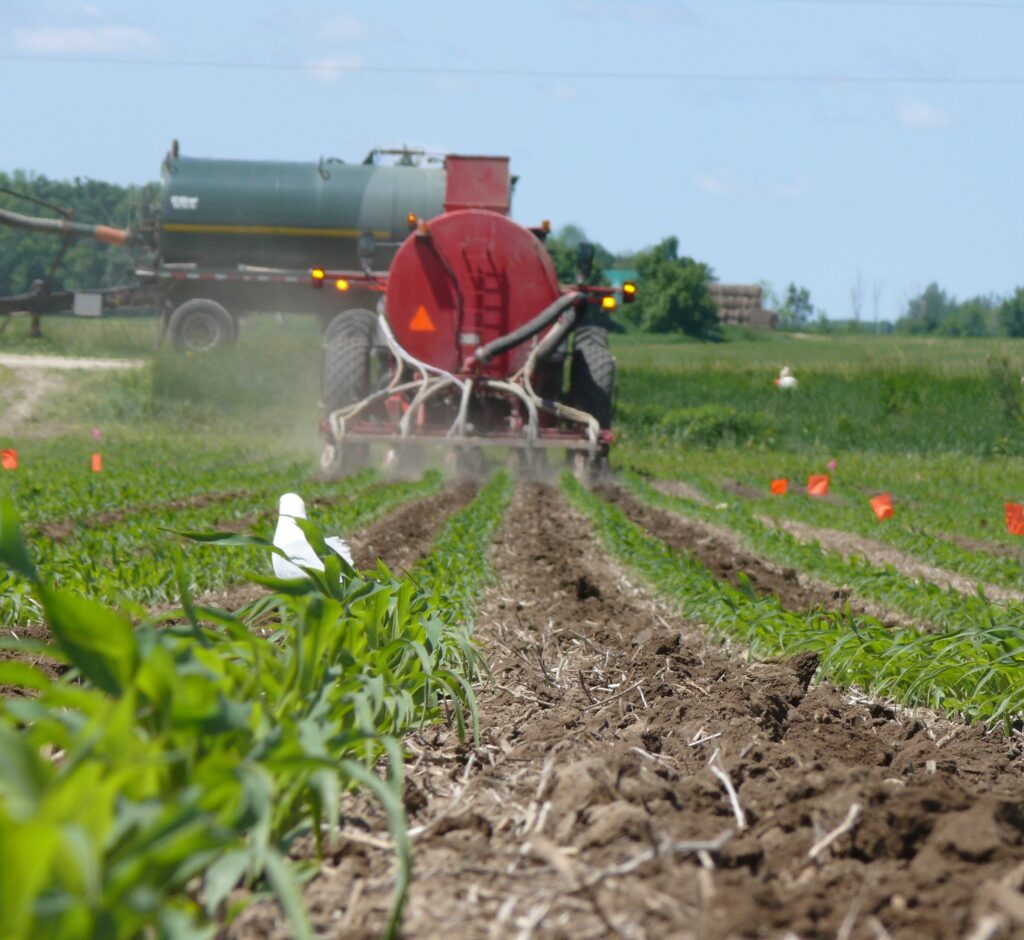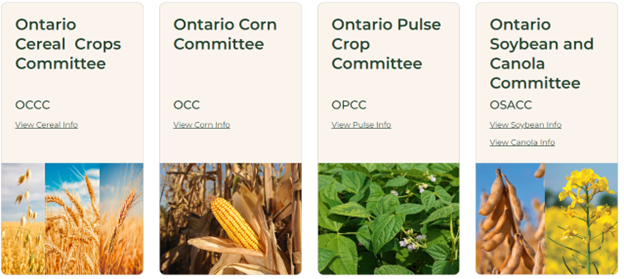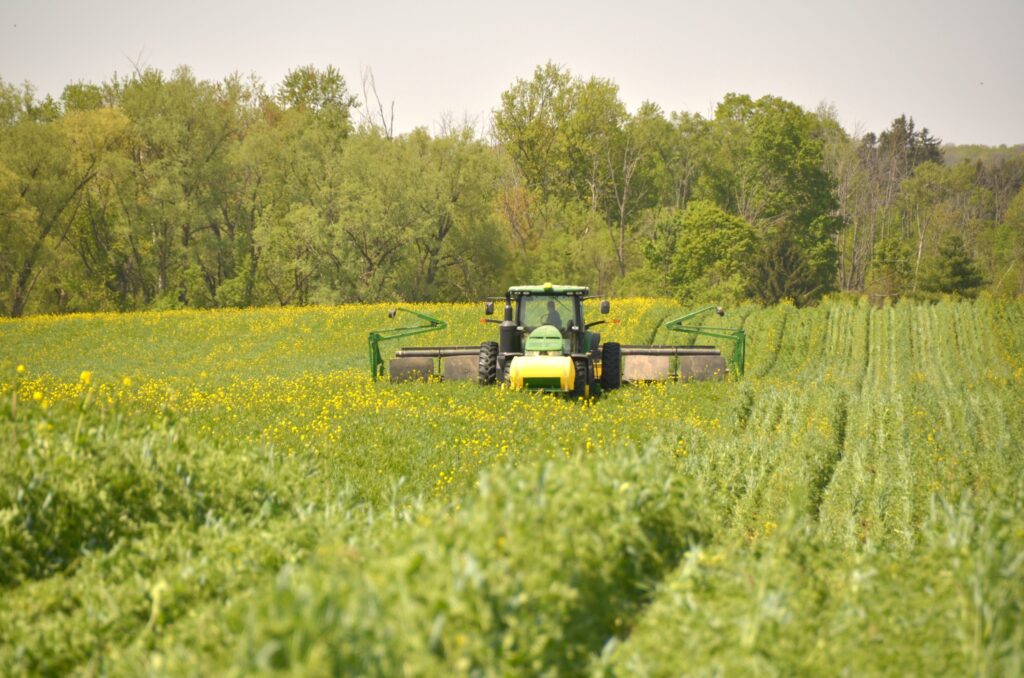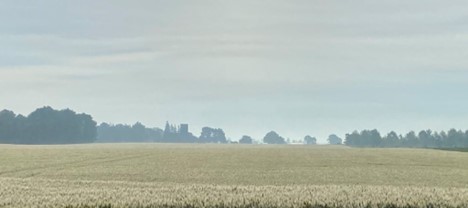Crop Conditions – Week of April 22, 2024

Field Conditions Light rains and cool temperatures this past weekend and early this week slowed field drying and limited opportunities for early planting of field crops. While it is generally too wet for field work, conditions are variable depending on rainfall received. The remainder of this week was mostly sunny, but expectations are tempered by […]
Beef up your forage intake rates on pasture
This article was originally published in the Spring 2024 edition of Virtual Beef. Pastures in Ontario usually consist of a mix of bunchgrasses and sod-forming grasses. This diversity in plant structure encourages livestock to sort through the pasture, spending grazing time seeking the most palatable plants instead of maximizing forage intakes. Increased forage intake leads […]
Soil Compaction
Soil compaction can severely impact the productivity, profitability and environmental consequences of farming today. These impacts include decreased water infiltration, increased soil erosion, reduced yield, reduced nutrient uptake, increased input cost, reduced root growth and rooting depth, reduced water holding capacity, and reduced water and soil quality. Questions about Soil Compaction and this page can […]
Crop Conditions – Week of April 15, 2024

Quote of the week: “You can have a 2000 bushel grain cart, but man, it squeezes!” – Adam Pfeffer – concerning the compaction that large equipment can cause in-field. The first agribusiness breakfast meeting of the year kicked off in Ridgetown on April 16, 2024. For the schedule of local meetings across Ontario, contact margaret.templeman@ontario.ca […]
Canadian Bt Trait Tables for 2024
The Canadian “Bt” Corn Trait Tables for 2024 are now available: English: Canadian Bt Corn Trait Table for April 2024 French: Maïs exprimant des protéines insecticides disponibles au Canada (Avril 2024) Bt is in quotes because RNAi (RNA interference) technology, which is not a Bt trait, is now offered in some of the packages for […]
Managing Winter Wheat with Growing Degree Days

Calculating Growing Degree Days Growing Degree Days (GDDs) can be a helpful tool to track cereal crop growth and development. GDDs are calculated by adding the average daily temperatures during the cereal crop’s growing season. If the daily average temperature is equal to or less than 0˚C, the degree-day value is zero and no GDDs […]
Managing Barley Yellow Dwarf Virus in Oats

Barley Yellow Dwarf Virus (BYVD) effects a wide range of grass hosts including wheat, oats and barley with oats being considered the most susceptible crop. In some regions of the province, BYDV has been reported as having a significant negative impact on oat yields. Appearance: The primary symptoms of BYDV include stunting and yellowing, reddening […]
GoCrops.ca is live!

The Ontario Corn Committee (OCC), the Ontario Cereal Crops Committee (OCCC), the Ontario Pulse Crop Committee (OPCC), and the Ontario Soybean and Canola Committee (OSACC) launched their new website: GoCrops.ca. The new website brings together the four previous crop committee websites under one cohesive banner. Ontario growers rely on third-party variety performance trial information to […]
NEW LINK for the Great Lakes and Maritimes Pest Monitoring Network!
The Great Lakes and Maritimes Pest Monitoring Network (GLMPMN) website has been upgraded and has a new permanent link: https://experience.arcgis.com/experience/7164d23d488246d198dcf7a07d8c9021 Please bookmark this new link and use it going forward to enter any trap sites and trap data. The same link should work well for both desktop browsers and mobile devices. Everything is still the […]
Does it work to plant green into cover crops for corn? Five unique Ontario fields in 2023.

Planting corn directly into a living cover crop before it is killed by herbicide or tillage is not something that would have been considered 30 years ago. However, with advances in planter technology, herbicide options, and a greater awareness of cover crop benefits to soil health, more growers are doing it. According to the 2022-2023 […]
Is it too early for nitrogen?

A warmer than normal winter coupled with dry weather through February has led to surprisingly good field conditions in much of southern Ontario. While it looks like it could be an early spring, we know that the weather can change rapidly this time of year. Some are questioning whether it makes sense to take advantage […]
Ontario Corn Hybrid DON Screening Trials Now Available

The inaugural 2023 Ontario corn hybrid DON screening trial report is available on GoCorn.net at http://www.gocorn.net/OCC_DON_Report_2023_Final_20230212.pdf. Ontario corn hybrid DON screening trials were initiated by the Ontario Corn Committee in 2019 following high DON levels in the 2018 corn crop. Hybrid susceptibility is one of the greatest factors influencing Gibberella Ear Rot (Figure 1) and […]
Submit an Event
Calendar
OMAFRA – Dateline Find events organized by OMAFRA or other organizations across Ontario. The events posted on this site are aimed at sharing information of interest to agriculture and regional economic development clients. […]
2023 Corn Seasonal Summary

Planting In April 2023, Statistics Canada estimated Ontario farmers intended to plant 2.3 million acres of grain corn, 5% higher than the 5-year (2018-2022) average seeded acres of 2.19 million acres (OMAFRA Crop Statistics). A warm sunny window opened for one week starting the Easter weekend (April 7 to 9) and provided a small opportunity […]